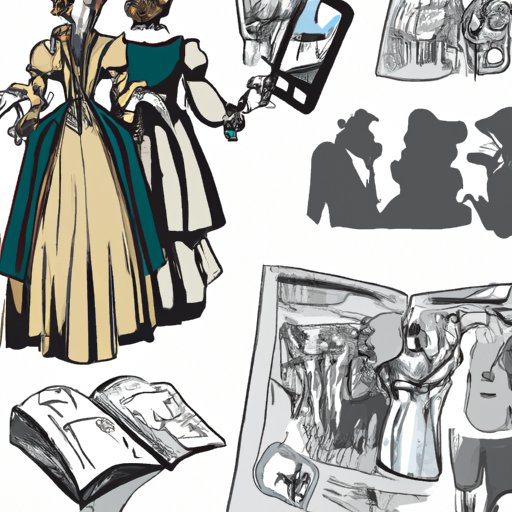Introduction
Realism in theatre is a style of performance and production that seeks to portray characters and events as realistically as possible. It began in the 19th century as a reaction against the highly stylized forms of theatre popular at the time, such as melodrama. Realism in theatre focuses on the psychological truth of characters and their relationships, as well as attempting to create a believable world on stage, often through detailed sets and costumes.
Origins of Realistic Theatre
Realism in theatre has its roots in the 19th century, when it emerged as a reaction to the highly stylized forms of theatre popular at the time, such as melodrama. The emergence of realism was also influenced by other factors, such as the rise of naturalistic painting and photography, which helped to create a sense of realism in art and culture. In addition, the industrial revolution had changed the way people lived and worked, and this had an impact on theatre, as it sought to reflect the changing times.
The first major proponent of realism in theatre was German playwright and director, Georg Büchner. His plays were notable for their focus on the inner lives of characters and their emphasis on psychological truth. Other influential figures in the development of realism included Henrik Ibsen, Anton Chekhov, and August Strindberg. All of these writers sought to create a more realistic form of theatre, which focused on the inner lives of characters and sought to create a believable world on stage.
Script Analysis
Realism in theatre can be seen most clearly in the writing of plays. Realistic scripts focus on character development and dialogue, while avoiding melodramatic plot twists and over-the-top theatricality. Characters are usually portrayed as complex individuals, with flaws and strengths, and their relationships with one another are explored in depth. Dialogue is often written in a naturalistic style, with characters speaking in their own voices, rather than using formal language or grandiose speeches.
In addition, realistic scripts often have a linear structure, with a beginning, middle and end, and a clear story arc. This structure helps to create a sense of realism by showing how characters’ lives unfold in a logical and consistent manner. Realistic scripts also tend to avoid obvious symbolism and metaphor, instead focusing on creating a believable world and exploring the psychology of characters.
Impact of Realism on Modern Theatre
Realism in theatre has had a profound impact on modern theatre. It has changed the way plays are written and performed, and has encouraged the development of new styles and genres. Over time, different types of realism have emerged, such as expressionism, absurdism and postmodernism, all of which have their roots in the principles of realism.
Realism has also had an impact on the way actors approach their roles. Actors now strive to create believable characters and tell stories in a realistic manner, rather than relying on exaggerated gestures and theatricality. This has led to a shift away from traditional acting techniques towards more naturalistic performance styles.
Set Design
Realism in theatre can also be seen in the way sets are designed. Sets should be designed to create a believable world, with detailed props and scenery that help to transport the audience into the realm of the play. Lighting is also important, as it can help to create atmosphere and mood, and can be used to enhance the realism of a scene.
In addition, realistic sets should also be designed with an eye for detail. Props and furniture should be chosen carefully to create a believable environment, and should be placed in such a way as to suggest a lived-in space. The use of lighting and sound can also help to create a realistic atmosphere.
Costume Design
Costume design is also an important element of realism in theatre. Costumes should be chosen to create believable characters and to suggest their inner lives and motivations. Costumes should also be designed to reflect the period in which the play is set, and should be chosen to enhance the realism of the production.
In addition, costumes can also be used to create a sense of realism by suggesting details about a character’s lifestyle and background. For example, a wealthy character might be dressed in expensive clothing, while a poorer character might be dressed in more basic attire. Costumes can also be used to suggest certain emotions or states of mind, such as sadness or joy.

Role of Realism in Contemporary Theatre
Realism in theatre is still an important element of contemporary theatre, although it has been adapted and changed over time. Technology has had a huge impact on theatre, with many productions making use of digital effects and interactive elements to create a more realistic experience. The rise of social media has also had an impact, with many plays incorporating elements of social media into their storytelling.
Realism in theatre is also still evolving, with new forms emerging as theatre artists explore new ways of telling stories. While some plays may focus on creating a realistic world, others may focus on exploring abstract concepts or pushing the boundaries of what is considered ‘realistic’. Ultimately, realism in theatre is a living, breathing art form, and its evolution will continue to shape the future of theatre.
Conclusion
Realism in theatre is an important element of performance and production. It has its roots in the 19th century, and has since evolved to incorporate new technologies and social media. Realistic scripts focus on character development and dialogue, while sets and costumes should be chosen to create a believable world. Realism in theatre continues to evolve, and its influence on modern theatre is undeniable.
(Note: Is this article not meeting your expectations? Do you have knowledge or insights to share? Unlock new opportunities and expand your reach by joining our authors team. Click Registration to join us and share your expertise with our readers.)
